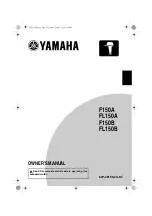
4
KIT8020CRD8FF1217P-1_UM Rev -
User Manual
The EVL board size is 124mmx120mmx40mm (not including heatsink). Different
types of heatsinks can be assembled depending on your cooling requirements. Figure
3 shows the board attached with the heatsink provided in the kit. However, the users
can use any type of heatsink that can work with the standard TO-247 package.
Figure 3. Cree EVL board assembly (see Appendix for assembly instructions).
4. Configurations
The EVL board can be flexible to implement difference topologies when using the
different configurations of SiC MOSFETs and SiC diodes. It is possible to test several
topologies with this board: synchronous Buck, non-synchronous Buck (or high-side
Buck), synchronous Boost, non-synchronous Boost, half phase-leg bridge converter,
H bridge converter (2x EVL boards) and bi-directional buck-boost converters. Table 1
summarizes the possible topologies that can be implemented using this EVL board.
For the phase-leg configuration, it can either use discrete anti-parallel SiC SBD or
body diode of SiC MOSFET, thus body diode of SiC MOSFET can be evaluated
without anti-parallel diode with option one in the below table.
With double EVL boards, H-bridge converter and bi-directional DC/DC converter can
be configured. For H-bridge, with different control architecture, the phase shift full
bridge, resonant LLC ZVS converter and single phase DC/ AC converter can all be
achieved. For bi-directional DC/DC converter, it can achieve either Buck from port 1 to
port 2 or Boost from port2 to port 1. Furthermore, with three EVL boards, it can even
be set up as a three-phase DC/AC inverter for some motor drive or inverter
applications.
Table. 1 The EVL board topology configuration
Option One:
Syn. Buck converter or
Phase-leg bridge
topology without
anti-parallel diodes
Q2
Q1
CON1
CON3
CON2
CON5
HVDC
L
Cout
RL
Cin
Step down voltage or
phase leg topology w/o
anti-parallel diodes
SiC Body diode used
Connect inductor L with
CON3 as output
CON1: INPUT
CON3: OUTPUT





































